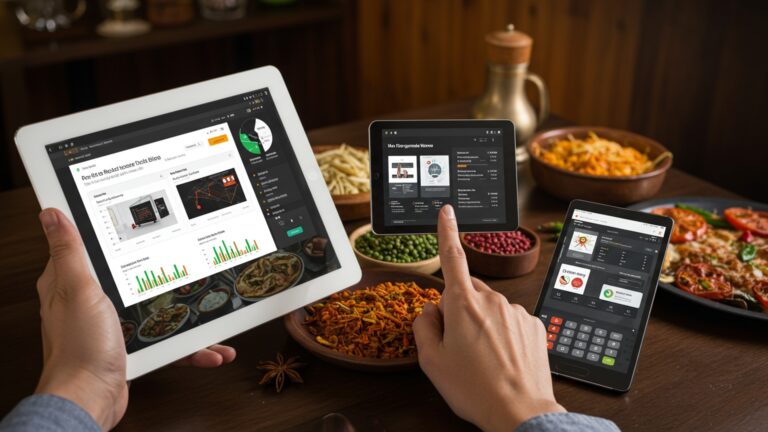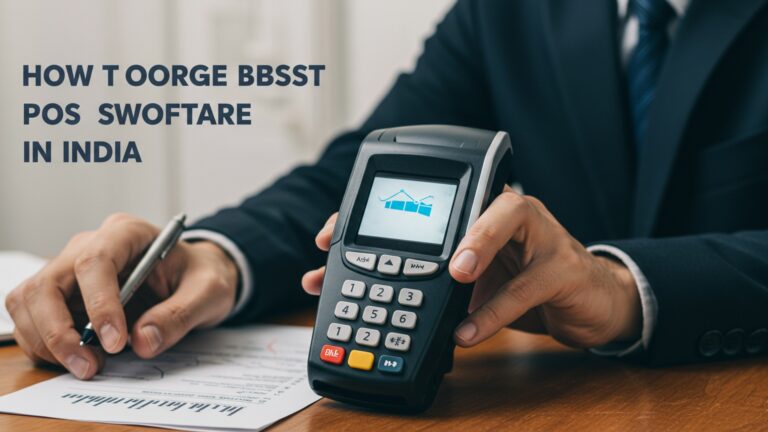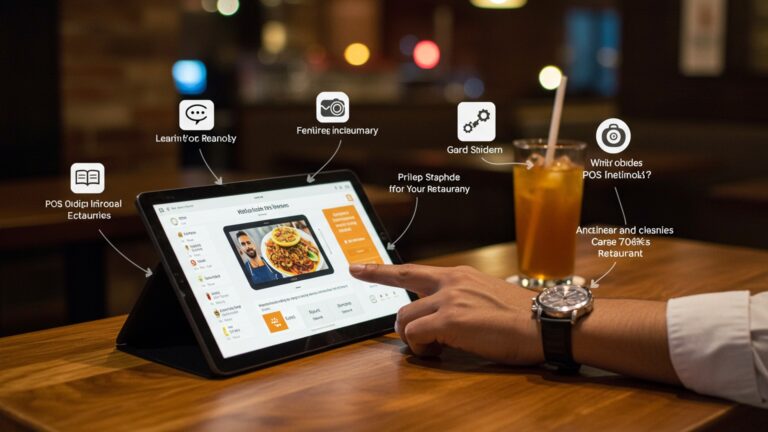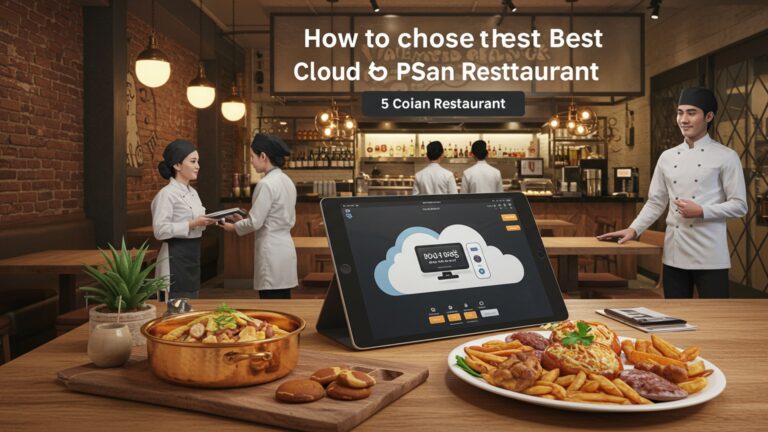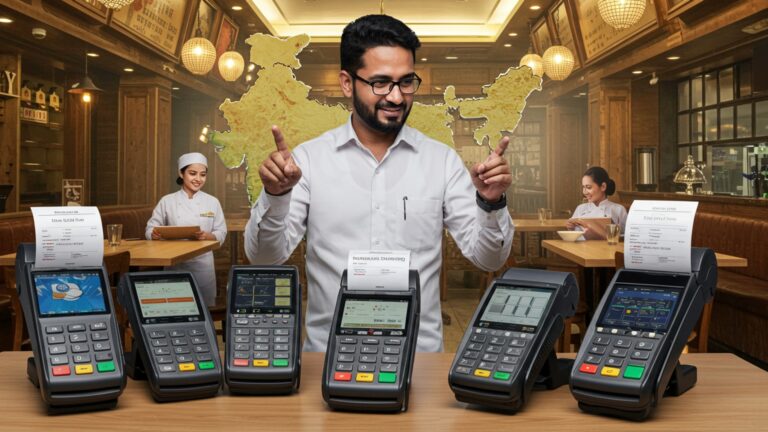Discover 7 Essential POS Software Tips for Cloud Kitchens in India
The Indian cloud kitchen landscape experiences unprecedented growth, demanding sophisticated operational tools beyond traditional restaurant setups. Managing multiple virtual brands, integrating seamlessly with aggregators like Zomato and Swiggy. optimizing real-time inventory across diverse menus presents significant challenges. A powerful POS software for cloud kitchens India becomes the central nervous system, orchestrating everything from order aggregation to kitchen display systems and delivery dispatch. Mastering key functionalities within this software empowers operators to navigate intense competition, reduce order errors. leverage data analytics for strategic growth, transforming operational bottlenecks into efficiency gains and boosting profitability in this dynamic sector.
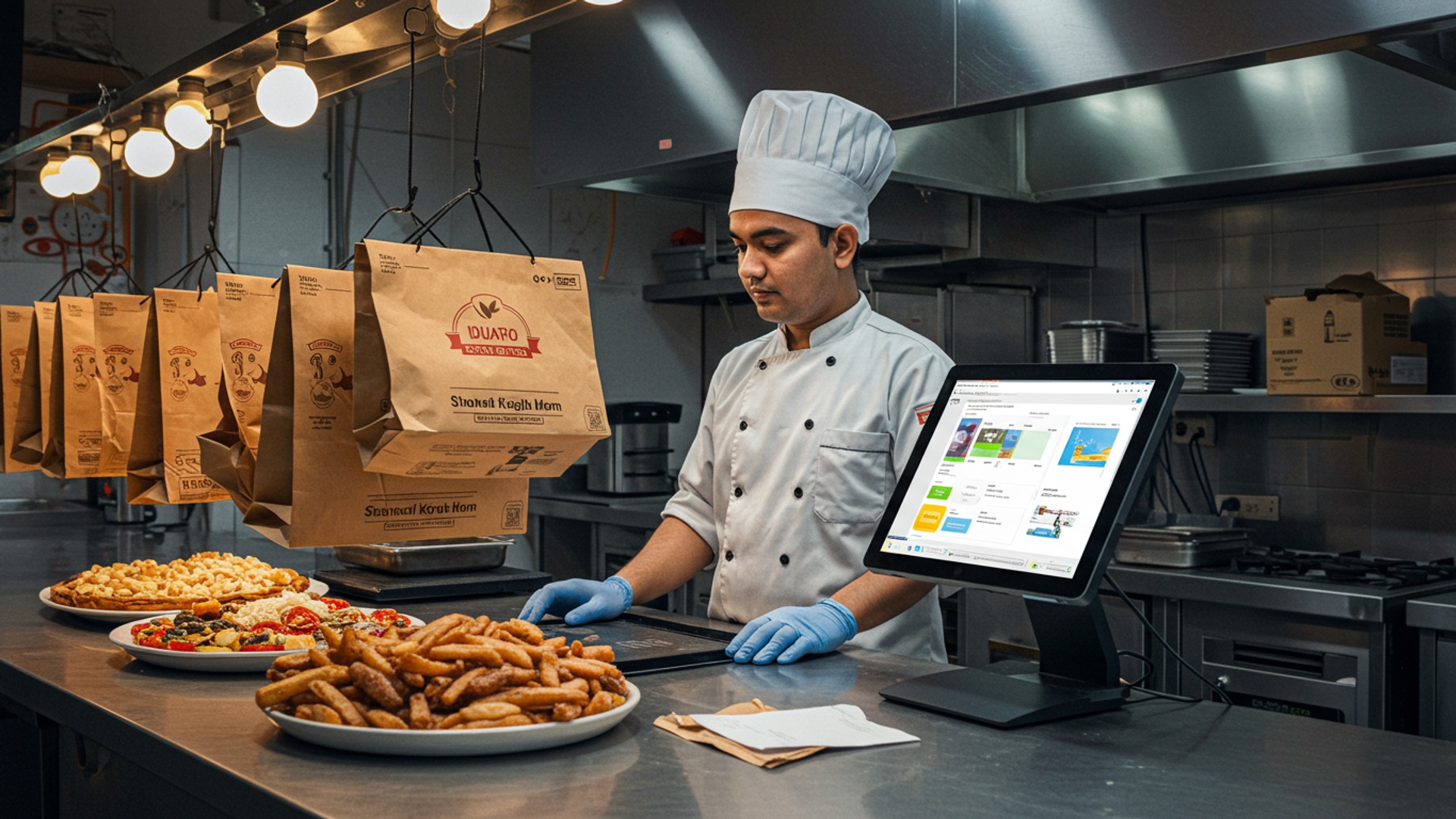
1. Seamless Integration with Delivery Aggregators and Ecosystem Partners
For cloud kitchens in India, the lifeblood of operations often flows through online food delivery platforms like Swiggy, Zomato. Dunzo. A standalone Point of Sale (POS) system that cannot communicate with these aggregators creates a massive operational headache. Imagine manually inputting every single order from multiple tablets into your POS – a recipe for errors, delays. frustrated staff. This is where a robust POS software for cloud kitchens India truly shines.
- Direct API Integrations
- Centralized Order Management
- Inventory Synchronization
- Payment Gateway Integration
The POS should offer direct, real-time integration with major food delivery aggregators. This means orders placed on Swiggy or Zomato automatically appear in your POS system, ready for the kitchen.
Beyond just receiving orders, the POS should allow you to manage, accept, reject. track all orders from a single dashboard, regardless of their source.
If an item goes out of stock on your POS, it should ideally reflect as unavailable on your aggregator menus to prevent order cancellations and customer disappointment.
Ensure the POS integrates seamlessly with various online payment gateways common in India, facilitating smooth financial reconciliation.
Consider a cloud kitchen in Bangalore that started with manual order entry. They frequently faced issues with duplicate orders, missed orders during peak hours. inconsistent inventory counts. Switching to a POS system with strong aggregator integrations reduced their order processing time by 40% and virtually eliminated order errors, leading to higher customer satisfaction and better operational efficiency.
2. Robust Inventory Management and Waste Reduction Features
In the highly competitive cloud kitchen landscape, every rupee saved on ingredients directly impacts your bottom line. Effective inventory management is not just about knowing what you have; it’s about knowing what you need, what’s expiring. how to minimize waste. This is particularly crucial for a POS software for cloud kitchens India, where ingredient costs and supply chain complexities can be significant.
- Real-time Stock Tracking
- Recipe Management
- Supplier Management & Purchase Orders
- Waste Tracking
- Batch Tracking & Expiry Dates
Automatically deduct ingredients from stock as dishes are sold. This provides an accurate, up-to-the-minute view of your inventory.
Define precise ingredient quantities for each dish. This ensures consistency and accurate stock deductions. For example, if your butter chicken recipe calls for 150g of chicken, 50g of butter. 20g of spices, the POS should deduct these exact amounts when a butter chicken is sold.
Track supplier details, manage purchase orders. monitor incoming stock efficiently. Some advanced systems can even suggest reorder points.
Allow staff to log spoiled, damaged, or wasted ingredients. This data is invaluable for identifying areas of inefficiency and improving operational practices.
For perishable items, tracking batch numbers and expiry dates can prevent food safety issues and minimize spoilage.
Implement a system where every ingredient used in a dish is accurately mapped in the POS. Regularly audit your inventory against the POS data. This practice, when supported by a strong POS software for cloud kitchens India, can cut food waste by 15-20% and significantly improve profitability.
3. Comprehensive Order Aggregation and Kitchen Display System (KDS)
A cloud kitchen often juggles orders from multiple sources – direct website, phone calls. various aggregators. Without a centralized system, the kitchen can quickly become chaotic. A sophisticated POS software for cloud kitchens India should offer more than just order receipt; it needs to streamline the entire order fulfillment process through a Kitchen Display System (KDS).
- Single View of All Orders
- Order Prioritization
- Preparation Timers
- Course Management
- Reduced Manual Errors
All incoming orders, regardless of source, are displayed on a digital screen in the kitchen, eliminating the need for paper tickets and reducing errors.
Orders can be color-coded based on urgency (e. g. , pending, in progress, ready) or time remaining, allowing chefs to prioritize tasks effectively.
The KDS can display preparation times for each order, helping the kitchen staff manage their workflow and ensure timely delivery.
For more complex menus, a KDS can help manage different courses or preparation stations, ensuring all components of an order are ready simultaneously.
Digital displays are less prone to misreading than handwritten tickets. Updates are real-time, preventing confusion.
A multi-brand cloud kitchen operator in Mumbai struggled with order delays and mix-ups, especially during peak dinner hours. They integrated a POS with an advanced KDS. Within a month, their average order preparation time decreased by 10 minutes. customer complaints related to incorrect orders dropped by 80%. The KDS provided clarity and efficiency that manual systems simply couldn’t match.
4. Data Analytics and Reporting for Informed Decision-Making
Beyond processing transactions, your POS software for cloud kitchens India should be a powerful analytical tool. Data is gold. in a cloud kitchen, understanding sales trends, peak hours, popular dishes. customer behavior is critical for strategic growth and profitability.
- Sales Reports
- Product Mix Reports
- Inventory Variance Reports
- Employee Performance Reports
- Customer Data
Daily, weekly, monthly. yearly sales breakdowns. Identify peak times, slowest days. overall revenue trends.
Which dishes are your best sellers? Which are underperforming? This helps optimize your menu and promotional efforts.
Compare theoretical ingredient usage (based on sales) with actual usage (from inventory counts) to identify discrepancies, potential theft, or waste.
Track individual staff performance, order handling times. sales figures (if applicable for specific roles).
While direct customer interaction is less frequent, the POS can store order history, helping you grasp repeat customers or popular choices.
A cloud kitchen noticed a significant dip in sales on Tuesdays. Through POS analytics, they discovered that specific “combo meals” were popular on other weekdays but absent on Tuesdays. They introduced a “Tuesday Special Combo” and saw a 25% increase in sales on that day. This kind of data-driven decision-making is invaluable for optimizing your business model in the competitive Indian market.
Here’s a simplified example of how sales data might be presented:
Sales Report Summary (Last 30 Days) Total Revenue: INR 5,25,000
Average Daily Sales: INR 17,500
Number of Orders: 2,100
Average Order Value: INR 250 Top 3 Selling Items:
1. Chicken Biryani (INR 90,000)
2. Paneer Butter Masala (INR 75,000)
3. Veg Noodles (INR 60,000) Peak Hours:
1. 1:00 PM - 2:00 PM (Lunch)
2. 8:00 PM - 9:00 PM (Dinner)
5. Scalability and Multi-Location Management
One of the biggest advantages of the cloud kitchen model is its potential for rapid expansion. You might start with one kitchen catering to a specific locality and soon find yourself needing to operate multiple brands or locations. Your POS software for cloud kitchens India must be capable of scaling with your ambitions, not hindering them.
- Multi-Outlet Support
- Multi-Brand Management
- User Access Control
- Cloud-Based Architecture
The POS should allow you to manage multiple kitchen locations from a single dashboard. This includes centralized menu management, inventory tracking. reporting across all outlets.
Many cloud kitchens operate several distinct brands from the same physical kitchen. The POS needs to differentiate orders, manage separate menus. provide distinct reports for each brand.
As your team grows, you’ll need granular control over user permissions, ensuring each staff member has access only to the functions relevant to their role.
A true cloud-based POS offers flexibility and accessibility. You can manage your business from anywhere, on any device, without needing dedicated on-site servers. This is a fundamental characteristic for modern cloud kitchens.
A cloud kitchen operator initially managed two brands from one kitchen using a basic POS. When they expanded to three kitchens and launched two more brands, their existing system crumbled. They switched to a scalable POS software for cloud kitchens India that allowed them to centrally update menus for all five brands across three locations, view consolidated sales reports. manage inventory transfers between kitchens, streamlining their growth significantly.
6. User-Friendly Interface and Comprehensive Support
A powerful POS system is only as good as its usability. In a fast-paced cloud kitchen environment, where staff might have varying levels of technical proficiency and turnover can be higher, a complex system will lead to errors, frustration. lost time. Moreover, reliable support is non-negotiable.
- Intuitive Design
- Minimal Training Required
- Touch-Screen Compatibility
The interface should be clean, logical. easy to navigate, even for new users. Tasks like taking an order, applying a discount, or closing a shift should be straightforward.
Ideally, staff should be able to pick up the basics quickly with minimal training, reducing onboarding time and costs.
Most modern cloud kitchens use tablets or touch-screen devices for their POS. The software should be optimized for touch input.
- 24/7 Availability
- Local Support
- Multiple Support Channels
- Regular Updates
Cloud kitchens often operate beyond standard business hours. Issues can arise at any time. having access to support is crucial.
For cloud kitchens in India, having support staff who comprehend local operational nuances, language. payment methods is a huge advantage.
Offerings like phone, email, chat. a comprehensive knowledge base ensure help is always within reach.
The software should be regularly updated with new features, security patches. compliance updates (e. g. , GST changes).
Before committing to a POS, request a demo and involve your kitchen staff in the evaluation process. Their feedback on usability will be invaluable. Ask about their typical response times for support queries and whether they offer on-site assistance if needed. A good POS software for cloud kitchens India provider understands the urgent nature of kitchen operations.
7. Cost-Effectiveness and Transparent Pricing Structure
Budget constraints are a reality for many cloud kitchens, especially startups. While it’s tempting to opt for the cheapest solution, a wise decision involves balancing features, scalability. support with the overall cost. A truly effective POS software for cloud kitchens India offers clear value without hidden fees.
- Subscription Model
- Hardware Costs
- Transaction Fees
- Setup & Training Costs
- Add-on Modules
Most cloud-based POS systems operate on a monthly or annual subscription. Compare different tiers based on features, number of users. locations.
Some POS providers offer bundled hardware (tablets, printers, cash drawers). Factor these into the total cost, or consider if you can use existing hardware.
Be aware of any per-transaction fees, especially for integrated payment processing.
grasp if there are one-time fees for initial setup, data migration, or staff training.
Many POS systems offer additional modules (e. g. , loyalty programs, advanced analytics). Determine which are essential for your current needs and which can be added later.
Comparison Table: POS Pricing Models (Illustrative)
| Feature/Aspect | Basic Plan | Standard Plan | Premium Plan |
|---|---|---|---|
| Monthly Cost (INR) | 1,500 – 2,500 | 3,000 – 6,000 | 7,000+ |
| Users/Terminals | 1-2 | Up to 5 | Unlimited |
| Inventory Management | Basic Tracking | Advanced (Recipe, Waste) | Full-suite (Multi-location) |
| Aggregator Integrations | Limited (e. g. , 2 platforms) | All Major Platforms | All Major + Custom APIs |
| KDS | No/Basic | Standard KDS | Advanced KDS (Multi-station) |
| Reporting | Basic Sales | Sales, Inventory, Item Mix | Comprehensive Analytics |
| Support | Email/Chat (Business Hrs) | 24/7 Email/Chat + Phone | Dedicated Account Manager |
Always ask for a complete breakdown of all costs. Avoid providers with vague pricing or hidden charges. A reputable provider of POS software for cloud kitchens India will be upfront about their pricing and help you choose a plan that fits your budget and operational needs, ensuring you get the best value for your investment.
Conclusion
Navigating the dynamic landscape of India’s cloud kitchens demands more than just culinary prowess; it requires smart technological integration. As we’ve explored, a robust POS system is your kitchen’s digital backbone, crucial for everything from efficient order management to insightful inventory control. From my personal experience assisting numerous cloud kitchen startups, I’ve seen firsthand how a well-chosen POS, particularly one that seamlessly integrates with aggregators like Swiggy and Zomato while offering real-time stock updates, can dramatically cut down on order errors and food waste. Embrace the power of analytics; understanding peak order times and popular dishes via your POS data is a game-changer, allowing for optimized staffing and targeted promotions, a key trend in today’s competitive F&B market. Remember, the goal isn’t just to process transactions. to empower smarter business decisions. Investing in the right cloud POS is an investment in scalability and sustained profitability, transforming operational complexities into a smooth, efficient culinary journey.
More Articles
Master 8 Ways Restaurant Billing Software Boosts Indian Business
Discover 5 Best Restaurant POS Systems for Small Eateries in India
How to Choose the 5 Best POS System Options for Your India Restaurant
7 Essential Features Your Restaurant Billing Software in India Must Have
How to Streamline Billing and POS Software for Efficient Sales and Inventory Management
FAQs
Why do cloud kitchens in India even need special POS software?
Cloud kitchens operate differently from traditional restaurants, often juggling multiple brands, online orders. no dine-in. A specialized POS helps streamline order management from various platforms (like Swiggy, Zomato), track inventory accurately. manage deliveries efficiently, which is key to their success in the Indian market.
What are the most crucial integrations a cloud kitchen POS should have in India?
For cloud kitchens in India, critical integrations include popular food aggregators (Swiggy, Zomato, etc.) , online payment gateways. robust inventory management systems. Seamless integration with these helps centralize orders, avoid manual errors. keep track of stock levels across all your virtual brands.
Can a POS really help me manage my ingredients and stock better?
Absolutely! A good POS for cloud kitchens offers advanced inventory management. It tracks raw material consumption with every order, alerts you when stock is low. even helps identify wastage. This is super crucial for controlling costs and ensuring you always have ingredients for your menu items.
What kind of insights can I get from POS reports that are useful for my cloud kitchen?
POS analytics can give you a goldmine of data. You can see which dishes are bestsellers, identify peak order times, interpret customer preferences. even track the performance of individual brands. This data helps you make smarter decisions about menu planning, staffing. marketing strategies.
My cloud kitchen is small now. what if I want to expand? Can the POS handle that?
Yes, scalability is a big deal! When choosing a POS, look for one that can easily accommodate growth. This means it should be able to handle more orders, additional virtual brands, or even new kitchen locations without needing a complete system overhaul. You want a partner that grows with you.
Is specialized POS software expensive for cloud kitchens, especially smaller ones?
Not necessarily. While there’s an investment, many POS solutions offer flexible pricing plans suitable for different business sizes. The key is to look at the return on investment. By reducing errors, optimizing inventory. boosting efficiency, a good POS can save you money and increase profits in the long run, often outweighing its cost.
How does a POS system help if I’m running multiple food brands from one kitchen?
This is where a specialized POS shines for cloud kitchens! It allows you to manage orders for all your virtual brands from a single dashboard. You can track sales, inventory. performance for each brand independently, even if they share the same kitchen space and staff, making multi-brand operations much smoother.

